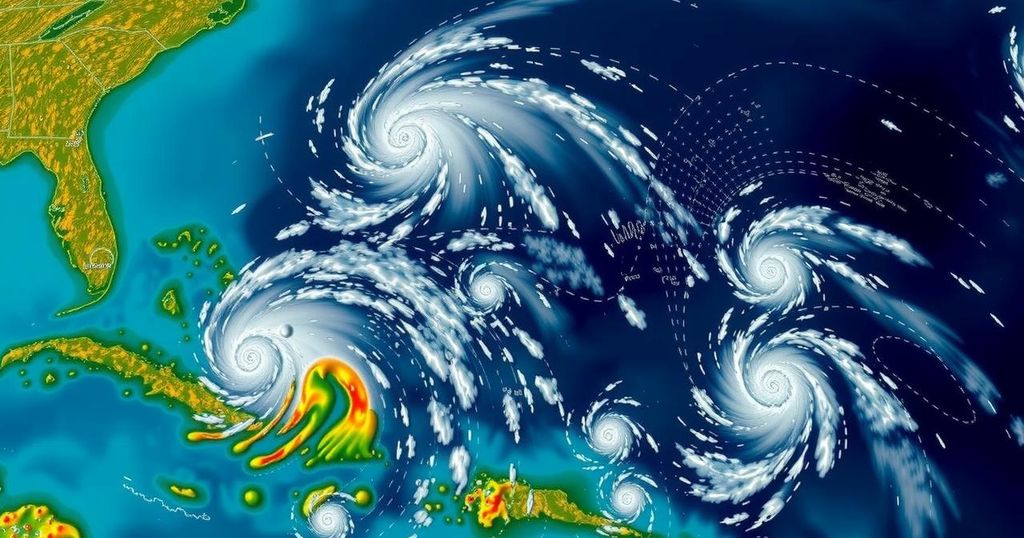Weather
World news
AFRICA, ANDREA, BARRY, BE, BRIAN MCNOLDY, CAYMAN ISLANDS, CHANT, CUBA, DEXTER, EVACUATIONS, FLORIDA, HELENE, HURRICANE, MCNOLDY, MILTON, NATURAL DISASTERS, NORTH AMERICA, NORTH CAROLINA, POWER OUTAGES, ROSENSTIEL SCHOOL, UNIVERSITY, UNIVERSITY OF MIAMI, WEATHER
Lena Nguyen
0 Comments
2024 Hurricane Season: An Overview of Storm Activity and Its Impacts
The 2024 hurricane season concluded with 18 named storms and significant impacts from major hurricanes, particularly Helene and Beryl. With a noteworthy increase in hurricane ratio due to warm ocean temperatures, the season led to extensive damage, highlighting the need for awareness and preparedness in upcoming years.
The 2024 hurricane season concluded with a significant impact, featuring 18 named storms, including notable hurricanes such as Helene and Beryl. Brian McNoldy, a meteorologist at the University of Miami, provided insights into this year’s unusual weather patterns, particularly a lull during August and September that eventually transitioned into an active phase. The season was characterized by record-setting ocean temperatures that fueled storms, leading to 11 hurricanes, five of which escalated to major hurricane status. Helene notably caused extensive damage across the Southeast U.S., with an estimated cost of $89 billion in damage and substantial inland flooding. The season showcased a higher-than-normal ratio of hurricanes to named storms and will impact the approach to storm preparedness for future years.
The hurricane season typically spans from June 1 to November 30, during which meteorological events evolve from tropical storms into hurricanes, depending on conditions such as ocean temperature and atmospheric patterns. The 2024 season was marked by a prior expectation for increased activity, attributed to climate factors that influence the development of storms. Understanding the patterns of past seasons provides insights into forecasting future storms, allowing communities to better prepare for potential disaster.
In summary, the 2024 hurricane season was notably active, exceeding average storm counts and showcasing severe inland impacts. The insights shared by meteorologist Brian McNoldy highlight the critical role of ocean temperature in storm development and the necessity for ongoing vigilance in storm preparedness, particularly with the lessons learned from devastating events like Hurricane Helene. As we look ahead to the next season, the naming conventions for upcoming storms such as Andrea and Barry remind us of the cyclical nature of hurricanes and the importance of proactive measures.
Original Source: kbindependent.org




Post Comment